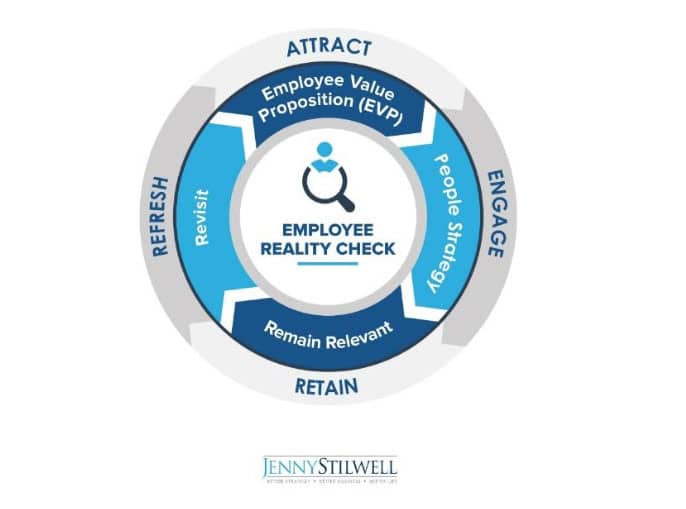The ‘3 As’ of building your A-Team

Having an A-Team will enable you to fully step into a more strategic leadership role so – as a united team – you can drive the business forward. Creating this group of key people is essential to a company’s growth, and the ‘3 As’ of building this team provide a framework to follow at every stage of growth.
Assemble
How you assemble your team is important. This covers how you recruit, what you hold to be important criteria for bringing new people on board, and how you define roles and responsibilities. Who and what will each person be responsible for?
When looking at the role, the best questions to ask is, ‘Does the company still need the role, or can it been changed or reconfigured or melded into other roles so that it may no longer exist?’.
When looking at the person, always ask, ‘If we didn’t have a specific role for this person, would we still want them in the business somewhere?’.
Make sure you remove those activities from your own role that you should no longer be doing, and allocate to roles in your A-Team.
When someone has been in the same role ‘forever’, we can sometimes be inclined to believe that the role is essential to the day-to-day functioning of the business when it isn’t. If this situation exists in your company, it is time to reassess.
Often, we tell ourselves that chaos would ensue if certain people were to leave the company! It won’t. Roles can be reconfigured, automated, completely changed or removed. People can be removed or reassigned and new roles can be created for people who could potentially add a lot of value to a business.
Specifically, when assessing if someone is the right person, look at four key criteria:
- Experience: whether they have the skills and expertise to perform the role (can they do it?)
- Attitude: whether they will perform the role to the standard required (will they do it?)
- Culture: whether they even want to perform the role within the business (will they fit the culture?)
- Leadership: whether they will help others to perform their own roles (will they help enable?)
Each of these criteria is important and will help you define whether you have the right person.
Once you have assembled your team to take on all of the activities of the company outside of the CEO role, you have the foundations of your A-Team.
Your direct reports should manage all aspects of the company between them. You ideally don’t want any more than five. If your business is still relatively small, and depending on the business model, you could have as few as two.
Assimilate
Building your culture and assimilating your team into it is a major element of your A-Team framework.
A healthy and positive culture will enable your team to flourish, and will attract and retain new talent as the business expands. It is more critical now than ever before to be mindful of health and safety, mental health, employee happiness and satisfaction, and employees seeking options to find better workplaces.
Companies who invest in culture are enabling their growth. They value and focus on it, and they have productive and effective teams as a result. Employee attrition is low.
Two of the greatest challenges for all businesses are people retention – and at costs the business can afford – and being able to attract new people. It’s important to do an ‘employee reality check’ (see figure below) so you have the insights to be able to attract, engage and retain your key people. If a refresh of any part of your team is required, you need to be across this as well.
At the heart of this model is the employee value proposition (EVP). The purpose of using this tool is to help drive a positive culture, attract the right people and ensure that what you are providing stays relevant to your team.
The EVP is created from the feedback that is provided by your team in a structured way. With this feedback, you will have the insights you need to develop a ‘people strategy’. This basically outlines your company’s recruitment guidelines, the onboarding process, tangible rewards and intangible benefits for your team, and retention and career development strategies. It’s all about attracting, retaining and developing your people within a positive cultural framework. At the same time, it is a tool to help your organisation remain relevant to your people, and it highlights when you need to do a refresh on any elements of the team or culture.
This exercise can be conducted annually if the size and growth of your team warrants it. It is an ideal tool if you sense there may be problems with your people and culture. It is also valuable for large teams to enable the leader to get closer to what everyone is really thinking and feeling. It is best done face-to-face in order to extract more detailed and valuable feedback. It can also be done with certain apps – although the level of feedback is generally not as deep, this method is more efficient for large teams.
An important starting point for creating and building on culture is to define your company’s values, and engage the team in the process.
Once you are comfortable with what your core values are, identify what those values look like when people are behaving in alignment with those values, and what is happening when those values are not being honoured. That makes it clear to everyone what those values mean and how that translates to behaviour.
People are attracted to – or leave – companies because of the culture. Culture, of course, incorporates a wide array of factors such as purpose, values, leadership, respect, communication and flexibility. How important are all these factors to your people, and why?
According to Gartner research of 5000 employees conducted in 2021, the traditional approach to EVP focuses too much on what the company gives the employee rather than why. The research concludes that value comes from feelings, not features. This point is critical. How does working for your company make your people feel?
As a company grows, more focus on communication at all levels is essential to keep the team growing together and assimilated with the culture. Being vigilant about new recruits will ensure maintenance of the quality of the A-Team – don’t let anyone through the net if they don’t fit with the culture, regardless of their role or location.
Align
Once you have your A-Team and positive culture in place, it’s important to ensure that your people and your company goals are in alignment.
Apart from the overall business numbers in the P&L and balance sheet, there needs to be correlation and alignment between your business KPIs and those for functional areas and individuals. For example, if the business goal is to reach $8.5M in sales, then the targets for the sales team need to correlate directly with that number.
Not all KPIs are as straightforward as quantifiable sales targets. Here’s how to determine KPIs for other areas of the business and the people working in those areas (production, operations or customer service for example):
- Start by asking what the key outcomes are that you want to achieve for that area. For example, a strategic focus for a company may be retention of all major clients (perhaps because they have had some attrition). Account managers will be driven by KPIs for customer retention, customer satisfaction and probably customer value. Operations could be measured against production and delivery of physical product and provision of support services. Customer service could focus on indicators such as customer resolution rates (for example, 100% of problems resolved on the first call), and it could report on green, orange and red categories of outstanding customer issues and apply a percentage to each.
- Ask, ‘What is an acceptable number/rate/score if we are to achieve our overall targets?’.
- Align the KPIs of the people responsible for those metrics with the numbers themselves. For example, whoever is responsible for customer service is responsible for keeping customer service KPI numbers within acceptable levels.
- Then, allocate individual KPIs to the people in your team responsible for each of the activities that drive the numbers. For example, a customer service team member may be responsible for providing first-level response to all customer calls within two hours.
If you start with your high-level company goals and targets and then break it down, you can have measures set up across the business, and you can know by looking at the dashboards how well you are tracking and what exceptions may need urgent attention.
The ‘3As’ of building your A-Team – assemble, assimilate and align – are a framework to help you as the CEO, and your direct reports, to invest in and enable a team that will help you drive business growth.
Written by Jenny Stilwell.
Have you read?
The World’s Top 10 Highest-Paid Wealth Management Executives.
CEO compensation: Highest paid chief executive officers in the United States.
Highly-Paid Entertainment Chief Executives (Averaged $31.66 Million).
Highest-paid health insurance CEOs.
Most Powerful Companies in Australia, 2023.
Add CEOWORLD magazine to your Google News feed.
Follow CEOWORLD magazine headlines on: Google News, LinkedIn, Twitter, and Facebook.
This report/news/ranking/statistics has been prepared only for general guidance on matters of interest and does not constitute professional advice. You should not act upon the information contained in this publication without obtaining specific professional advice. No representation or warranty (express or implied) is given as to the accuracy or completeness of the information contained in this publication, and, to the extent permitted by law, CEOWORLD magazine does not accept or assume any liability, responsibility or duty of care for any consequences of you or anyone else acting, or refraining to act, in reliance on the information contained in this publication or for any decision based on it.
Copyright 2024 The CEOWORLD magazine. All rights reserved. This material (and any extract from it) must not be copied, redistributed or placed on any website, without CEOWORLD magazine' prior written consent. For media queries, please contact: info@ceoworld.biz
SUBSCRIBE NEWSLETTER









